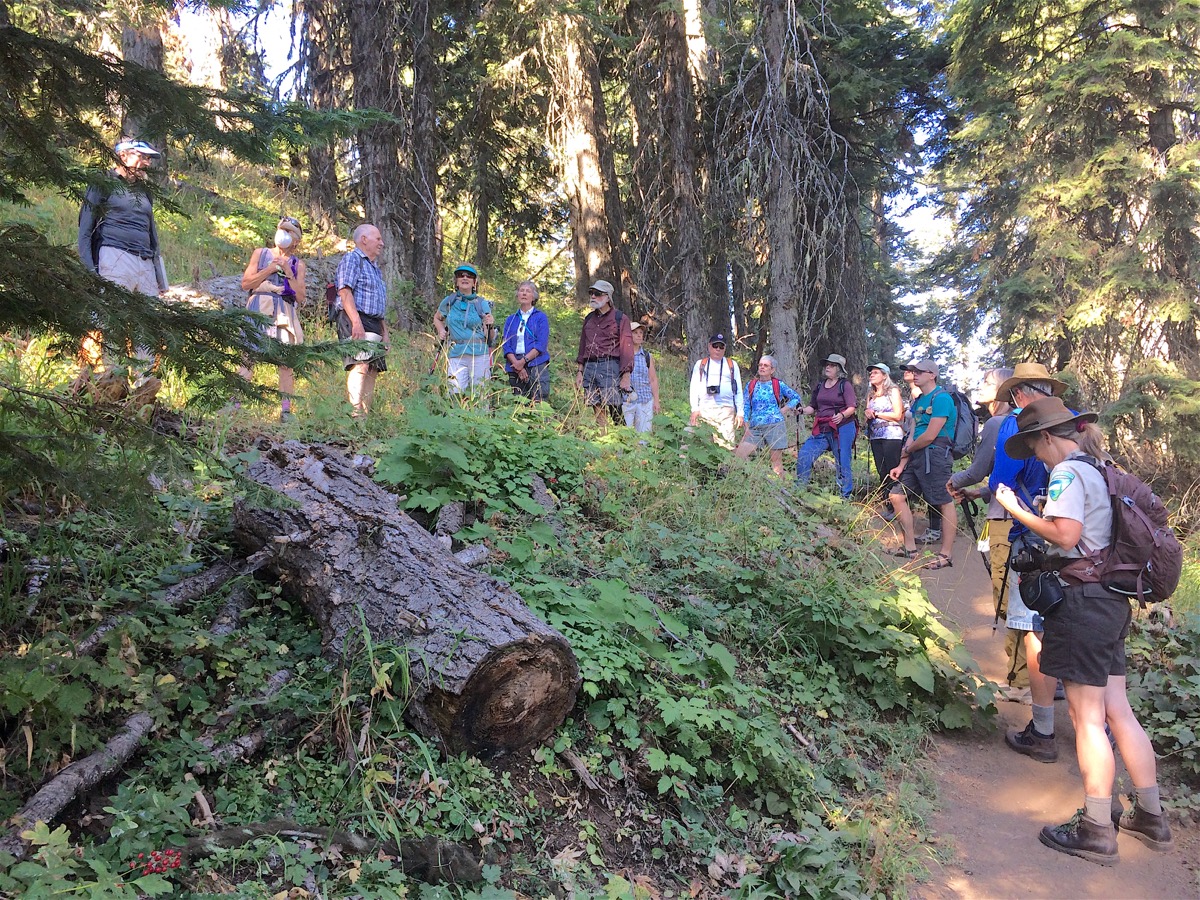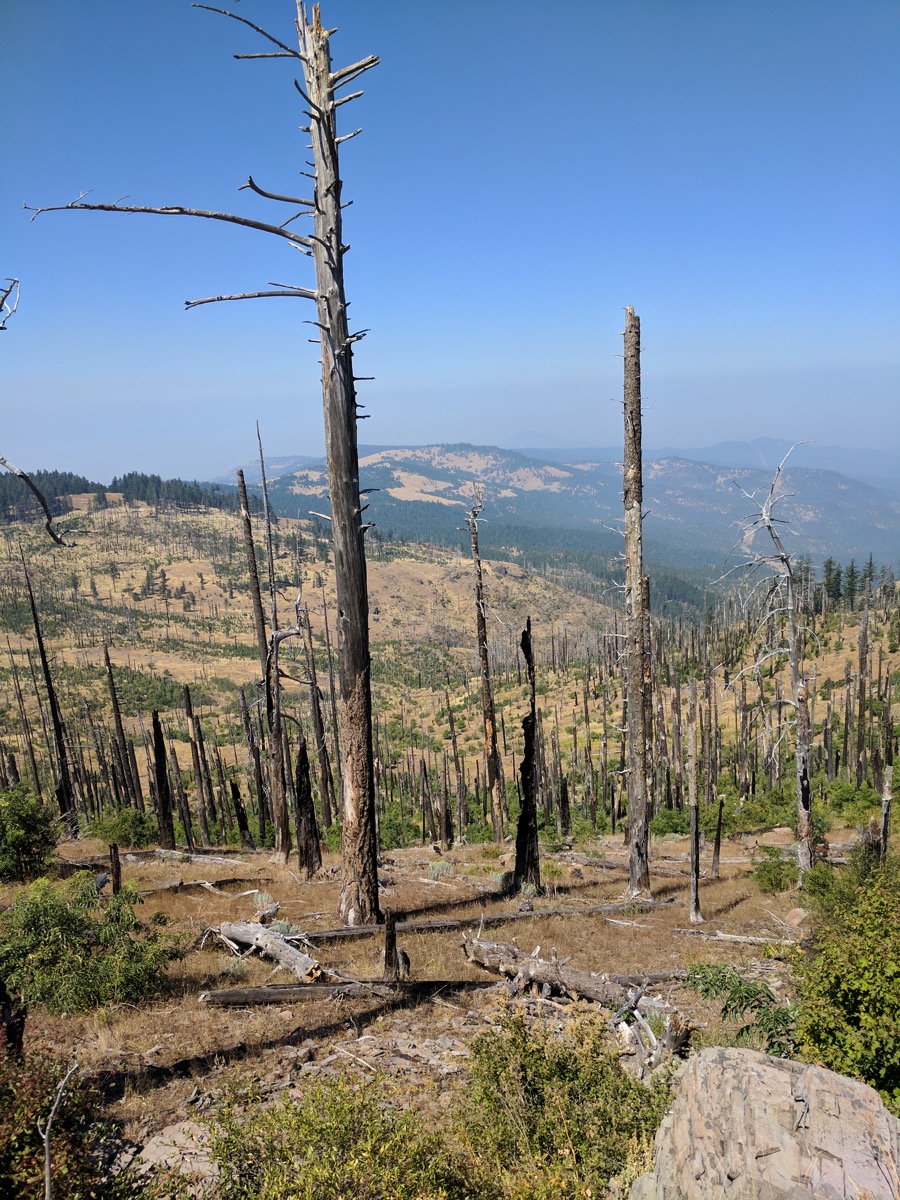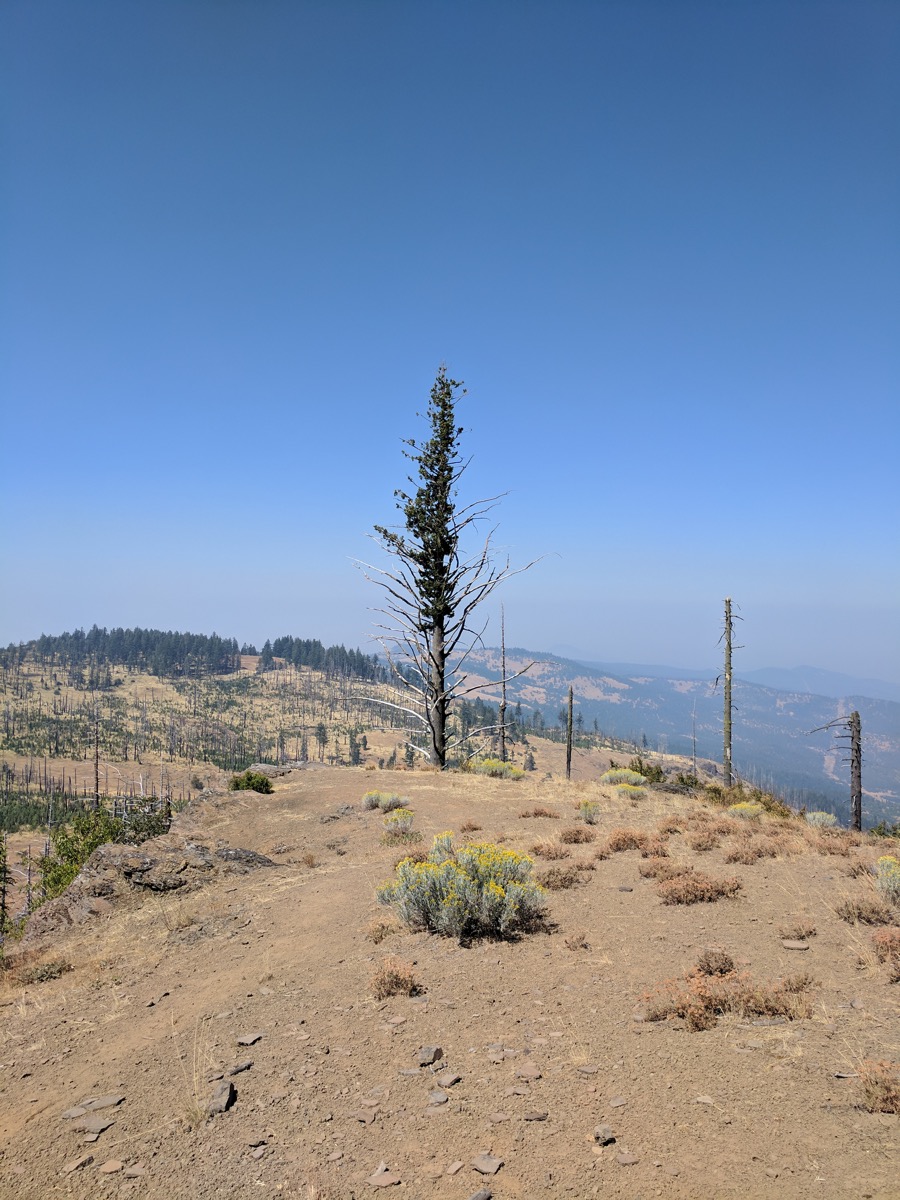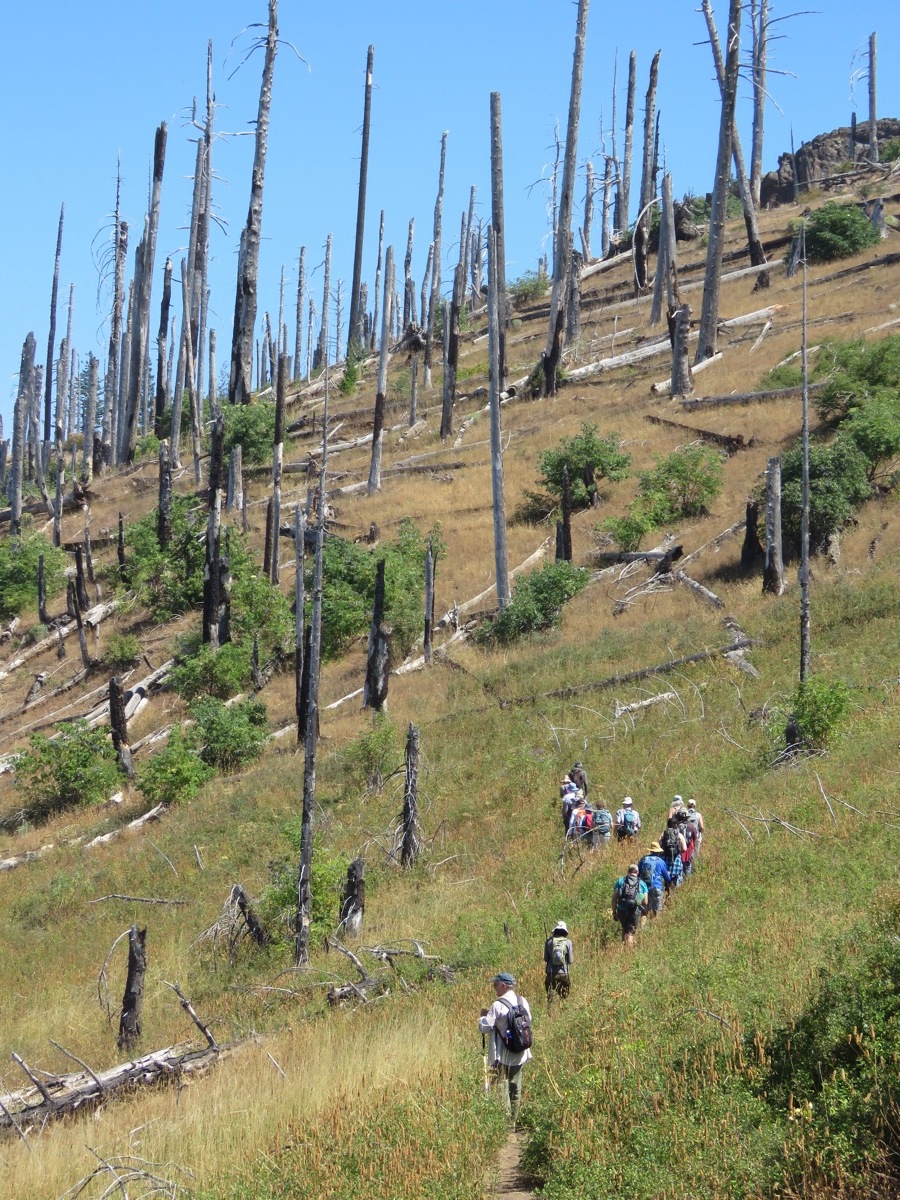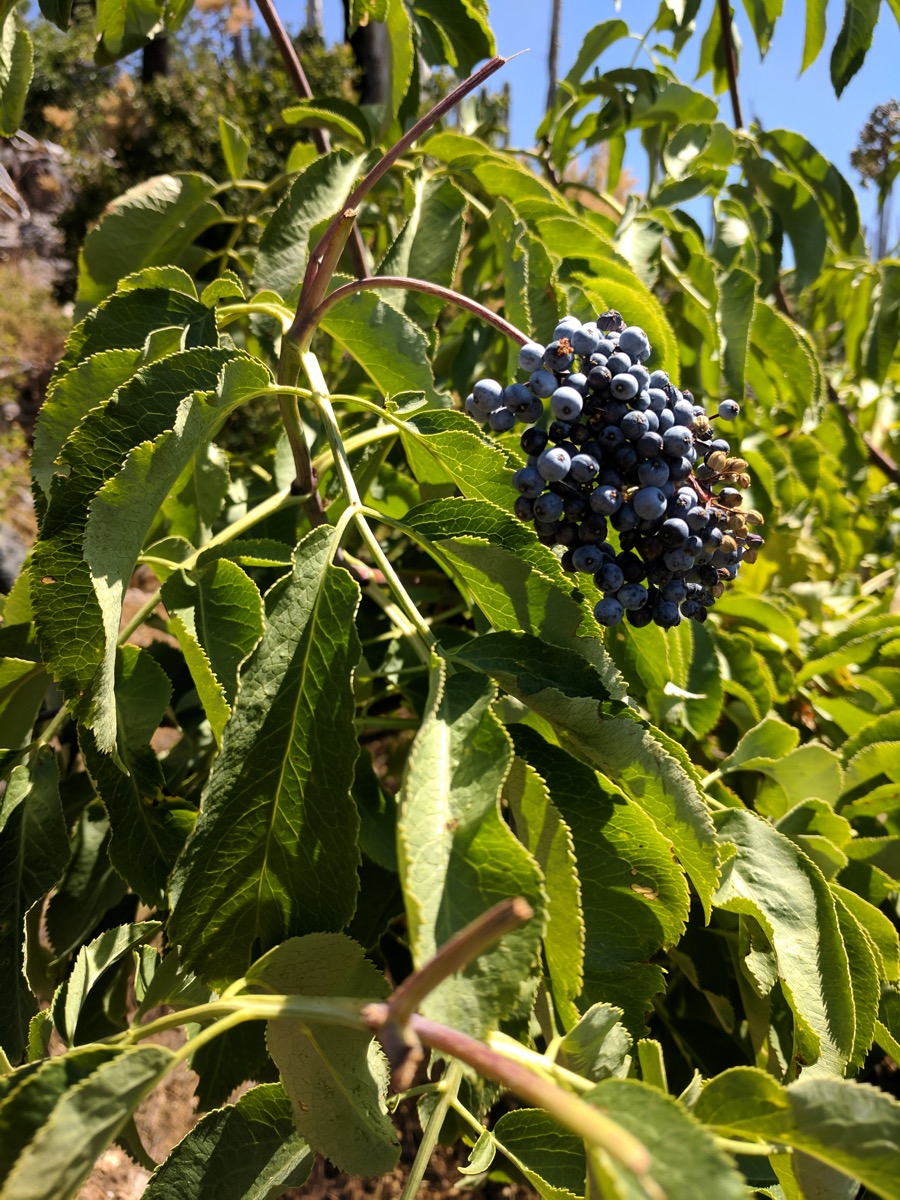In 2002, the East Antelope Fire travelled across part of Grizzly Peak, igniting trees both living and previously burned. This left behind an open landscape of charred trunks and sculpted snags. An event such as this changes the ecosystem and creates new habitats.
On Friday, August 25, 2017, we met at the Ashland Public Library to discuss the fire ecology of the Cascade-Siskiyou National Monument with Dr. Dennis Odion, ecologist with the National Park Service. Dr. Odion used illustrations and photos to discuss the plants that make up much of the habitat of the monument and how they have adapted to fire. This, in turn, led to how these adaptations have shaped the biodiversity of our public lands.
When a fire of mixed intensity burns through a forest, it creates a diverse landscape. Some areas experience low intensity, fast moving flames that have little effect on the trees. Others experience higher intensity flames that burn the foliage of the trees, but only weaker trees and saplings die. Still other areas experience extreme intensities that kill most, if not all, of the plant life. Together, this creates a mosaic of habitats throughout the forest, each benefiting different groups of species and increasing the biodiversity.
On the day of the hike, we set out for Grizzly Peak to observe this pyrodiversity in one of the newly expanded portions of the monument. It was a morning hazy with smoke, and we saw at least one area on the trail that had burned during recent lightning strikes. Even though the conditions did not bode well for the scenic views along the hike, they were conducive to our fire ecology discussions.
As we hiked we discussed the differences between Douglas-firs, white firs, and ponderosa pines. The white-firs burn easily in fire, but are also quick to sprout from seeds in an affected area. The Douglas-firs and ponderosa pines are much harder to burn. The ponderosa pine, especially, has thick, scaly bark that is hard to ignite and can easily flake off if it does catch fire. Some trees, like knob-cone pines, have sealed cones, called “serotinous,” that require fire to open the cones and release the seeds.
Much of our hike up was through conifer forest, largely untouched by fire. As we neared the halfway point, we found ourselves surrounded by landscape that had been touched by fire. Trees with interesting branching, growing green from branches that had somehow survived the flame, stood tall among twisted and charred snags of trees that were not so lucky.
Further along, Dr. Odion pointed out that white oaks and elder berries now flanked us. Oak trees have epicormic buds, meaning their buds are protected by bark and, after a fire burns off the foliage of the tree, these buds quickly sprout into new branches and leaves. This newly open landscape with dead trees is host to wood beetles, woodpeckers, Lazuli buntings, and many other species you would not find in the unburned conifer forest we hiked in earlier. Some research has shown that areas with frequent fires are less prone to sudden oak death, a disease that has been affecting Oregon forests. Researchers speculate perhaps smoke helps fight off the illness and protect the trees.
By the time we returned to the parking lot it was evident that Dr. Dennis Odion had shown us how pyrodiversity produces opportunity and change for a new round of plant and animal succession until the next fire. So much goes into creating the diverse area we are lucky to call home here in Southern Oregon. We were all so happy that we managed to endure the smoke and enjoy our public lands.
Text and images (unless otherwise noted)
John Ward, Hike and Learn Coordinator
